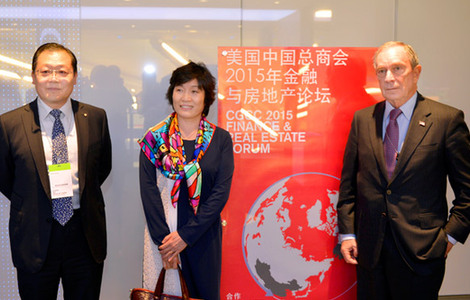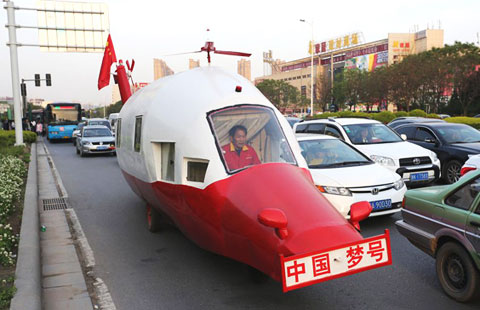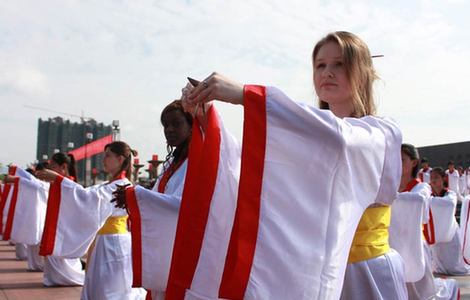Belt and Road Initiative facilitates more opening-up
Updated: 2015-04-23 09:58
(Xinhua)
|
||||||||
BEIJING - After decades of rapid growth, China is trying to further opening up and integrate into the global economy using its Belt and Road Initiative.
During Chinese President Xi Jinping's recently finished state visit to neighboring Pakistan, an estimated $50 billion worth of contracts were signed on road, railway and energy projects.
The contracts are a small step of the initiative's greater ambition to better link China to the world.
The "Belt and Road" refers to the Silk Road Economic Belt and the 21st Century Maritime Silk Road, mainly international trade and infrastructure projects, proposed by Xi when he visited Central Asia and Southeast Asia in September and October 2013.
On March 28, China unveiled an overall action plan for the initiative in order to accelerate implementation. The plan noted it is open to all countries and organizations to seek common prosperity.
The initiative will focus on transport, energy and communication infrastructure, and cooperation on investment, trade, industrial division, financing, education, tourism and technology.
The initiative shows China's effort to adapt to a changing world and push forward globalization through a new round of comprehensive opening up, said Li Xiangyang, president of the National Institute of International Strategy under Chinese Academy of Social Sciences.
Hans-Paul Burkner, chairman of the Boston Consulting Group, said the initiative will be crucial in further developing globalization and will benefit China and other countries.
China has been opening up for more than 30 years. It has transformed into market-oriented economy and attracted investment from developed economies such as the United States, the European Union and Japan.
Already the world's second largest economy, China is seeking to further open through cooperation with developing countries and emerging economies, both at the core of the Belt and Road Initiative.
"The programs of development will be open and inclusive, not exclusive. They will be a real chorus comprising all countries along the routes, not a solo for China itself," Xi said on March 28 when addressing the 2015 Boao Forum for Asia in south China's island province of Hainan.
The strategy covers countries and regions with a total population of 4.4 billion and a total economic volume of $21 trillion, 63 percent and 29 percent respectively of the world's total.
Burkner believes the initiative will help China create big markets along the routes, which means more opportunities to spread manufacturing and production around the region and for individuals and companies to participate in the world economy.
"China is devoting itself to build a community of common destiny with Asian countries and even rest of the world via platforms like the initiative, the Asian Infrastructure Investment Bank and the Silk Road fund," said Zhai Kun, a professor of international relations at Peking University.

 Chinese real estate deals in US topical forum
Chinese real estate deals in US topical forum
 Weird stuff you can buy on Taobao
Weird stuff you can buy on Taobao
 Top 5 wealthiest women in world's tech sector
Top 5 wealthiest women in world's tech sector
 Outsiders challenge traditional smartphone makers
Outsiders challenge traditional smartphone makers
 Helicopter replica on the road
Helicopter replica on the road
 Singing Chinese language's praises
Singing Chinese language's praises
 Foreign girls join in ancient Chinese coming-of-age ritual
Foreign girls join in ancient Chinese coming-of-age ritual
 Shanghai auto show kicks off
Shanghai auto show kicks off
Most Viewed
Editor's Picks

|

|

|

|

|

|
Today's Top News
China sustains US cities: Bloomberg
Real estate investors may switch focus: panel
Obama submits nuclear energy cooperation deal with China
US urges Japan to handle wartime history in constructive way
Mexico bans poultry, egg imports from bird flu-hit Iowa
Bloomberg: Chinese investment sustains US cities
China, Pakistan elevate ties, commit to long-lasting friendship
'Belt-Road' to exchange goodwill with economic coopertation
US Weekly

|

|






